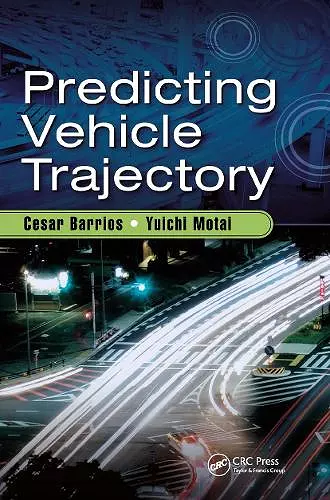Predicting Vehicle Trajectory
Yuichi Motai author Cesar Barrios author
Format:Paperback
Publisher:Taylor & Francis Ltd
Published:30th Sep '20
Currently unavailable, and unfortunately no date known when it will be back
This paperback is available in another edition too:
- Hardback£120.00was £120.00(9781138030190)

This book concentrates on improving the prediction of a vehicle’s future trajectory, particularly on non-straight paths. Having an accurate prediction of where a vehicle is heading is crucial for the system to reliably determine possible path intersections of more than one vehicle at the same time. The US DOT will be mandating that all vehicle manufacturers begin implementing V2V and V2I systems, so very soon collision avoidance systems will no longer rely on line of sight sensors, but instead will be able to take into account another vehicle’s spatial movements to determine if the future trajectories of the vehicles will intersect at the same time. Furthermore, the book introduces the reader to some improvements when predicting the future trajectory of a vehicle and presents a novel temporary solution on how to speed up the implementation of such V2V collision avoidance systems. Additionally, it evaluates whether smartphones can be used for trajectory predictions, in an attempt to populate a V2V collision avoidance system faster than a vehicle manufacturer can.
"I found specifically very important in this book the research conducted by the authors to properly handle error accumulation from missing data from offline sensors, and running the system at the fastest rate possible greatly reducing the prediction errors in non-straight paths (which are the harder task to predict). Moreover, I found very interesting the idea of using every-day equipment (smartphones) as a temporary (yet effective) solution to enable older vehicles to V2V and V2I technologies. It is also very important that the evaluation revealed that, in some cases, the smartphone prediction errors are similar to more expensive sensors in V2I. This book addresses solutions specifically for improved trajectory prediction in traffic networks. There is no question that this short book may be a valuable handbook for engineers, especially those who work on the specific problem trying to engage as much as possible users/vehicles in the V2V or V2I ecosystem."
—IEEE Intelligent Transportation Systems Magazine, Fall 2017
ISBN: 9780367656348
Dimensions: unknown
Weight: 380g
190 pages